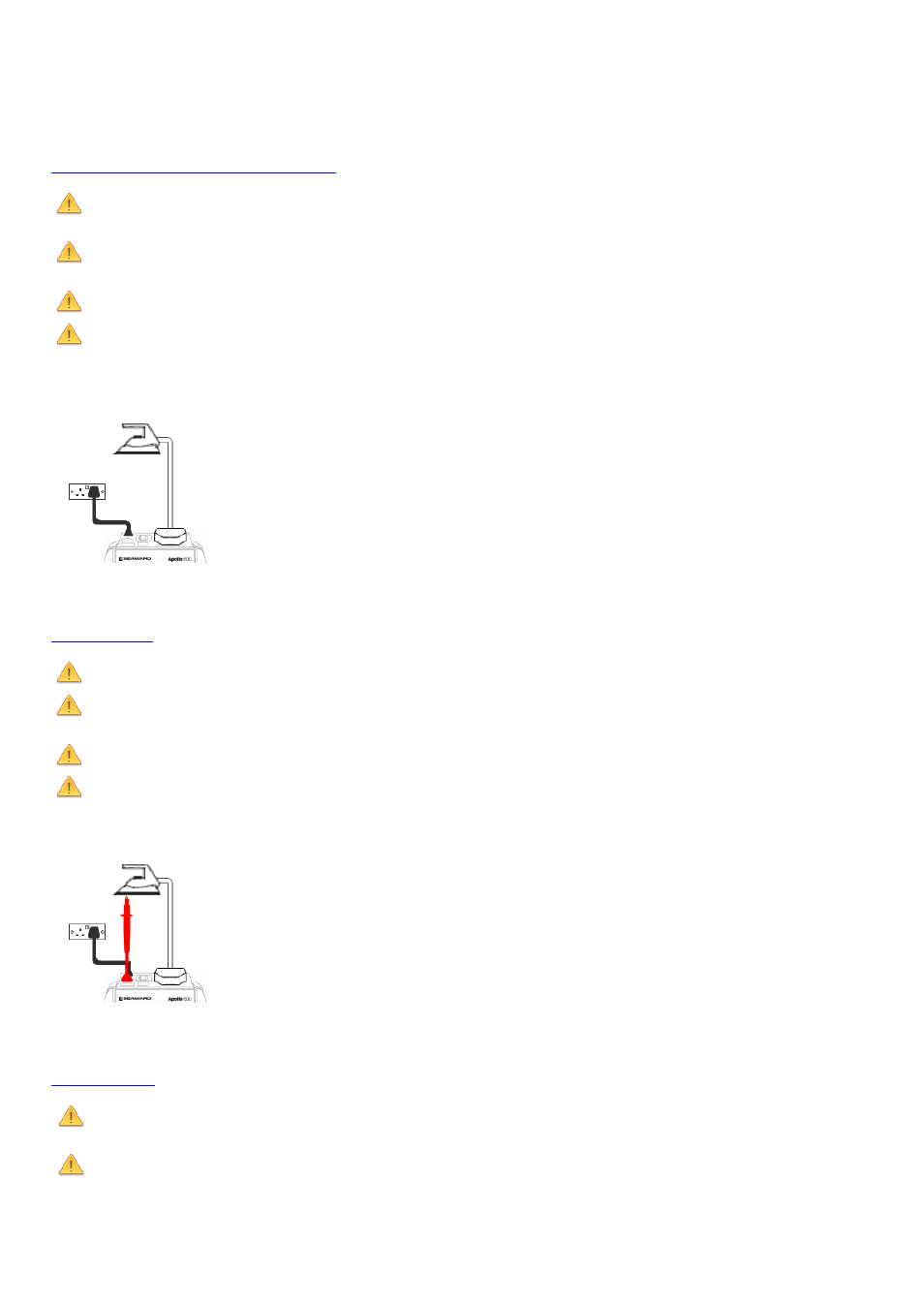Protective earth (pe) conductor current, Touch current, Rcd trip time – Seaward Apollo 500 User Manual
Page 14

In manual mode once the correct connections have been made for the selected test type press the Start button, in automatic mode the test will proceed automatically. The
test will continue until it times out. If we wish to abort the current test press the Stop button. The measurement will be displayed in milli Amps.
This test can prove useful in situations where neither conventional insulation nor flash tests are acceptable methods of testing the insulation of the appliance.
Please note that values for substitute leakage may differ substantially from that of conventional earth leakage tests because of the way that the test is performed (e.g. it will be
affected by the presence of Neutral-to-Earth suppression capacitors).
Protective Earth (PE) Conductor Current
Always test the earth continuity and insulation
resistance before performing a PE Conductor Current
test.
Always check that an appliance with moving parts (e.g. an
electric drill) is safely mounted to avoid risk of damage to
equipment or personnel.
Avoid prolonged, repeated use at full load (16A) and excessive
test duration as this may reduce the life of the unit.
Always ensure that appliance and leads, which include RCD
protection, that the RCD is reset at the beginning of the test.
Failure to do so may result in incorrect measurements being
recorded.
This test is applicable on Class I Equipment.
The Apollo 500 should be connected to a
mains supply. The EUT should be
connected into the EUT test socket.
In manual mode once the correct
connections have been made for the
selected test type press the Start button,
in automatic mode the test will proceed
automatically.
The test will continue until it times out. If we wish to abort the current test press the Stop button. The measurement will be displayed in mA.
Should the test measurement over range then the test will be aborted immediately and a fail will be logged.
Touch Current
Warning: Always test the insulation resistance before
performing a Touch Current test.
Warning: Always check that an appliance with moving parts (e.g.
an electric drill) is safely mounted to avoid risk of damage to
equipment or personnel.
Attention: Avoid prolonged, repeated use at full load (16A) and
excessive test duration as this may reduce the life of the unit.
Always ensure that appliance and leads, which include RCD
protection, that the RCD is reset at the beginning of the test.
Failure to do so may result in incorrect measurements being
recorded.
This test is applicable on Class I and Class II
Equipment.
The Apollo 500 should be connected to a
mains supply. The EUT should be
connected into the EUT socket, the red
test terminal should be connected to point
at which the leakage measurement is
required.
In manual mode once the correct connections have been made for the selected test type press the Start button, in automatic mode the test will proceed automatically. The
test will continue until it times out. If we wish to abort the current test press the Stop button. The measurement will be displayed in milli Amps.
Should the test measurement over range then the test will be aborted immediately and a fail will be logged.
RCD Trip Time
Voltages between the protective conductor and earth may
influence measurements.
This test will pass a sinusoidal current of 30mA between the EUT socket and the IEC socket, and measure the time it takes for the in-line RCD to trip.
Remove all other connections before performing an RCD test..
The Apollo 500 should be connected to a
mains supply. The RCD should be